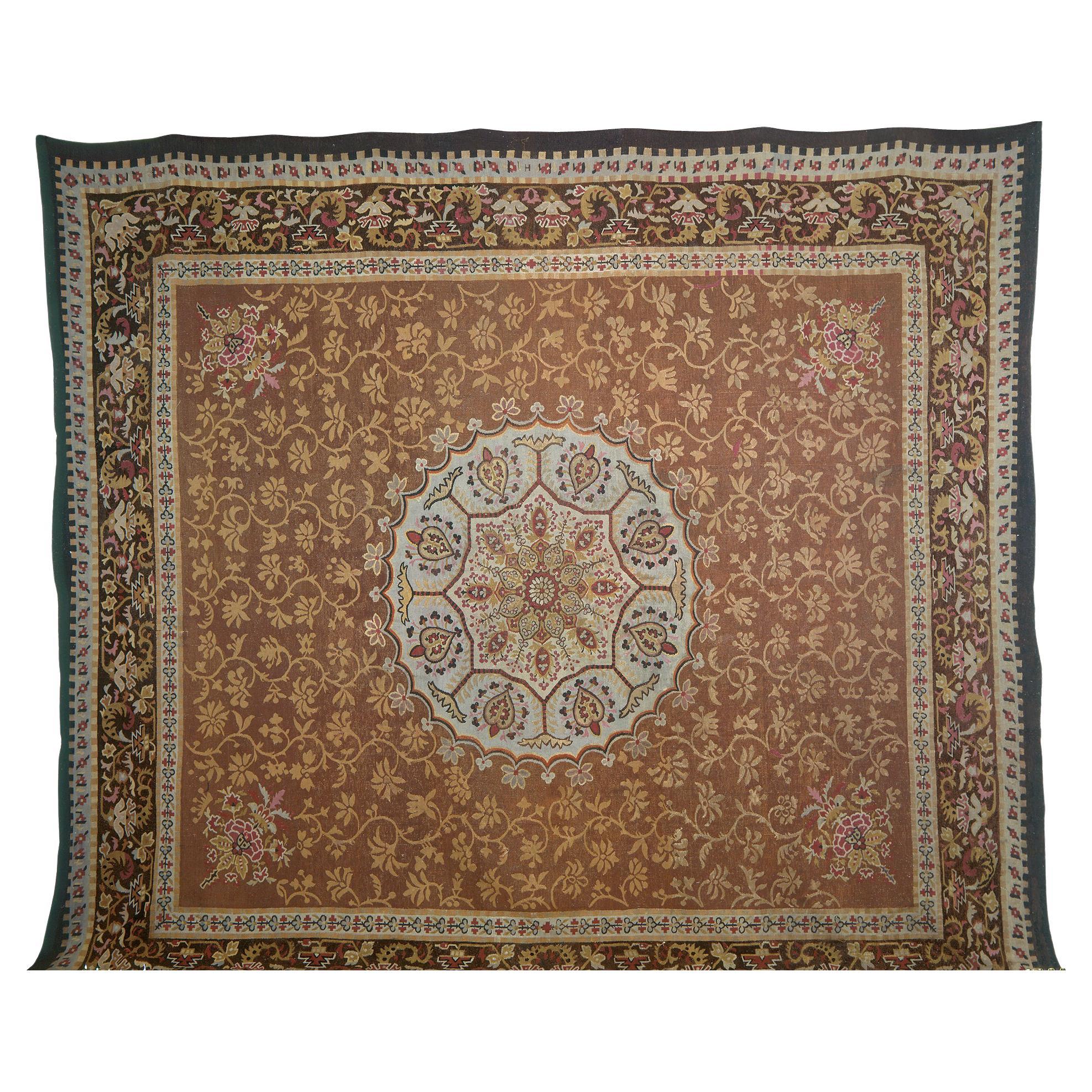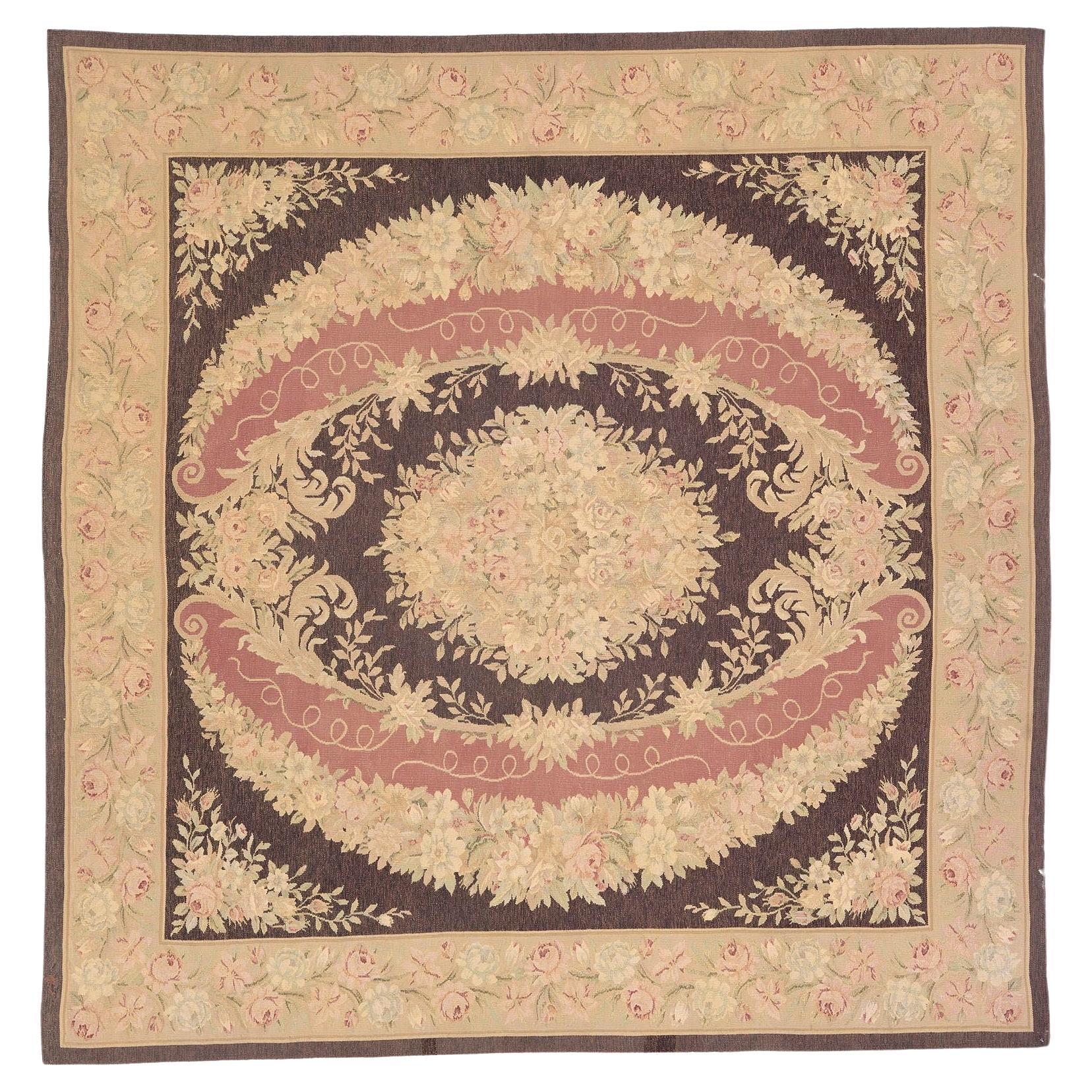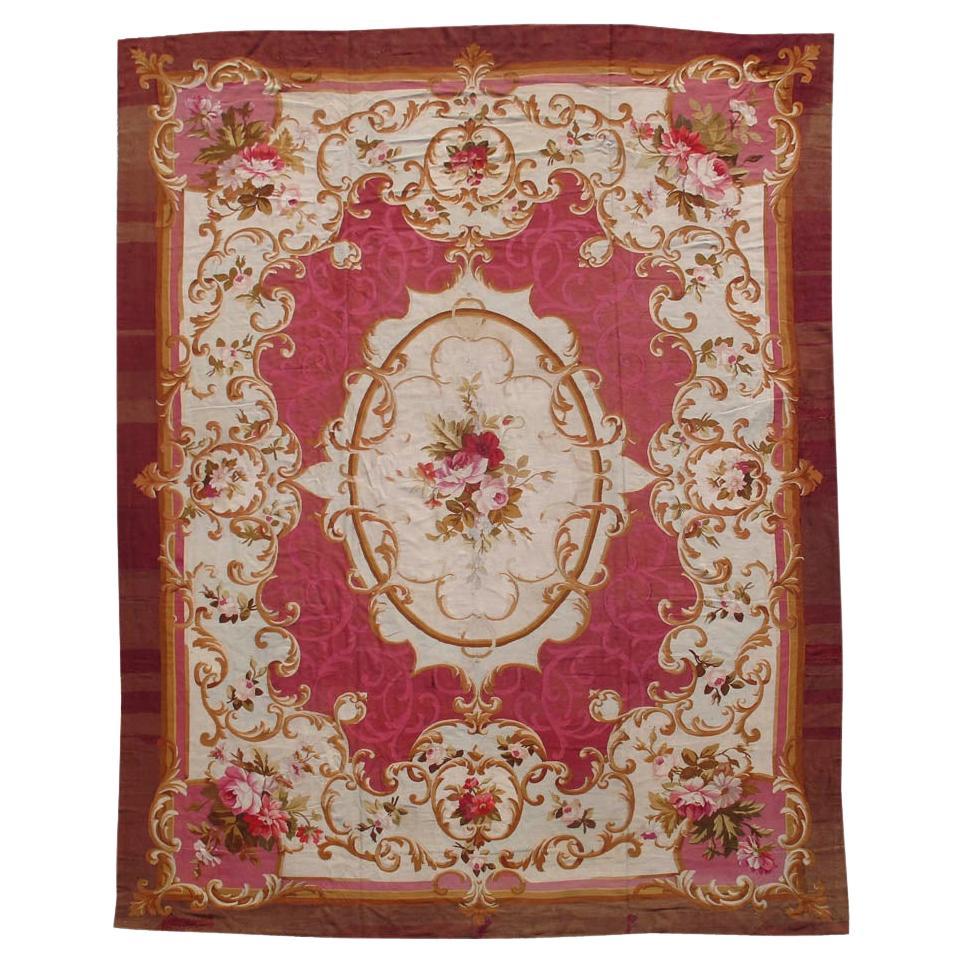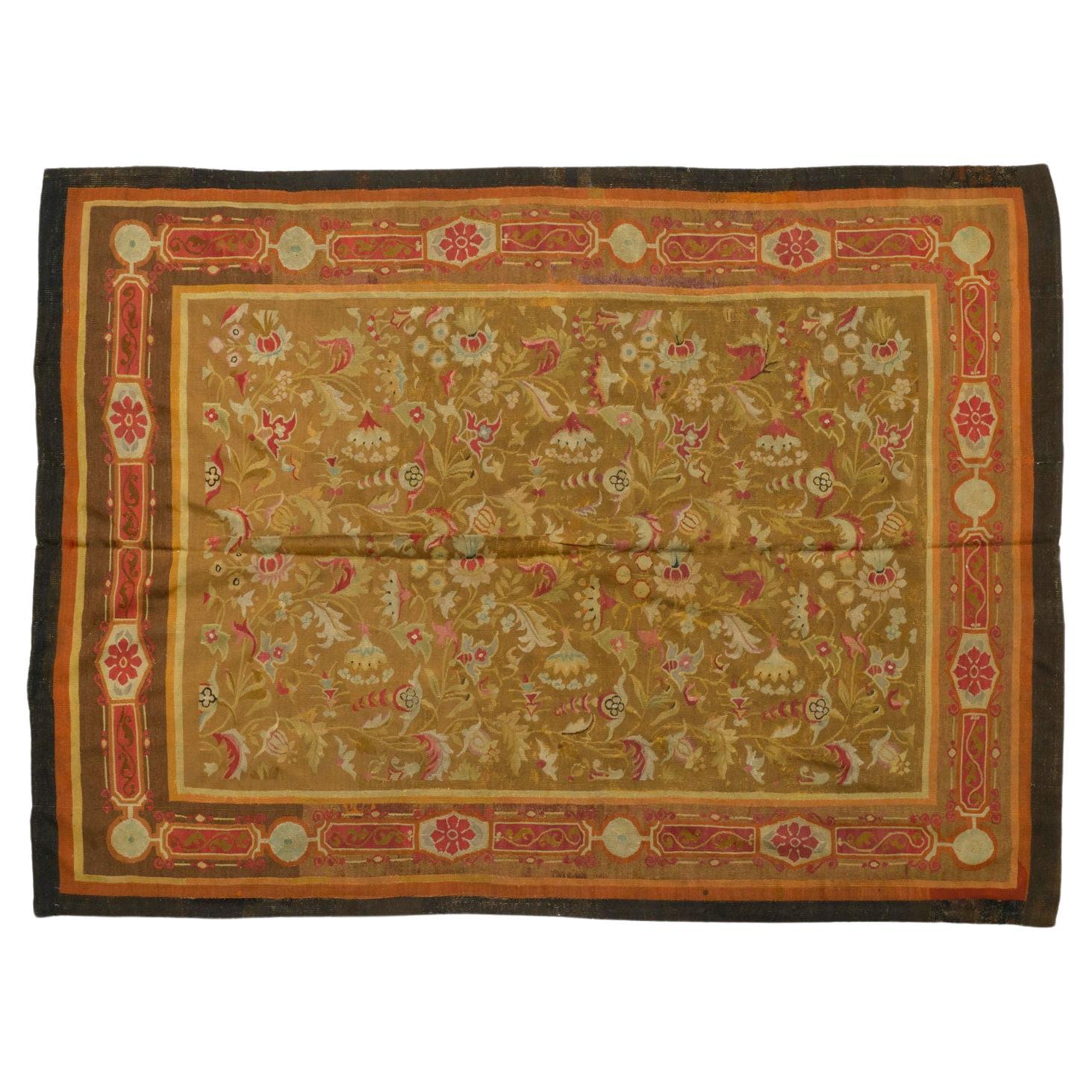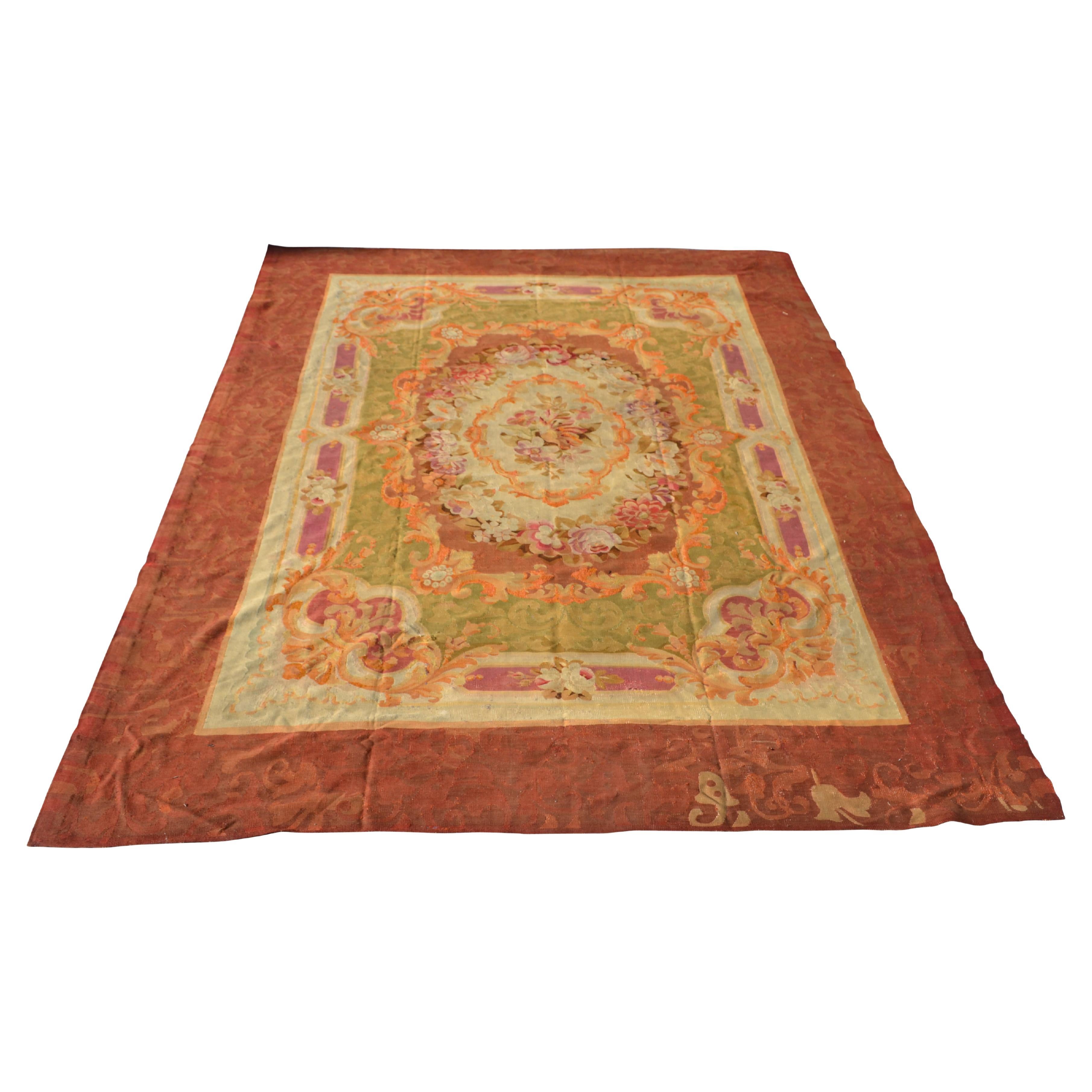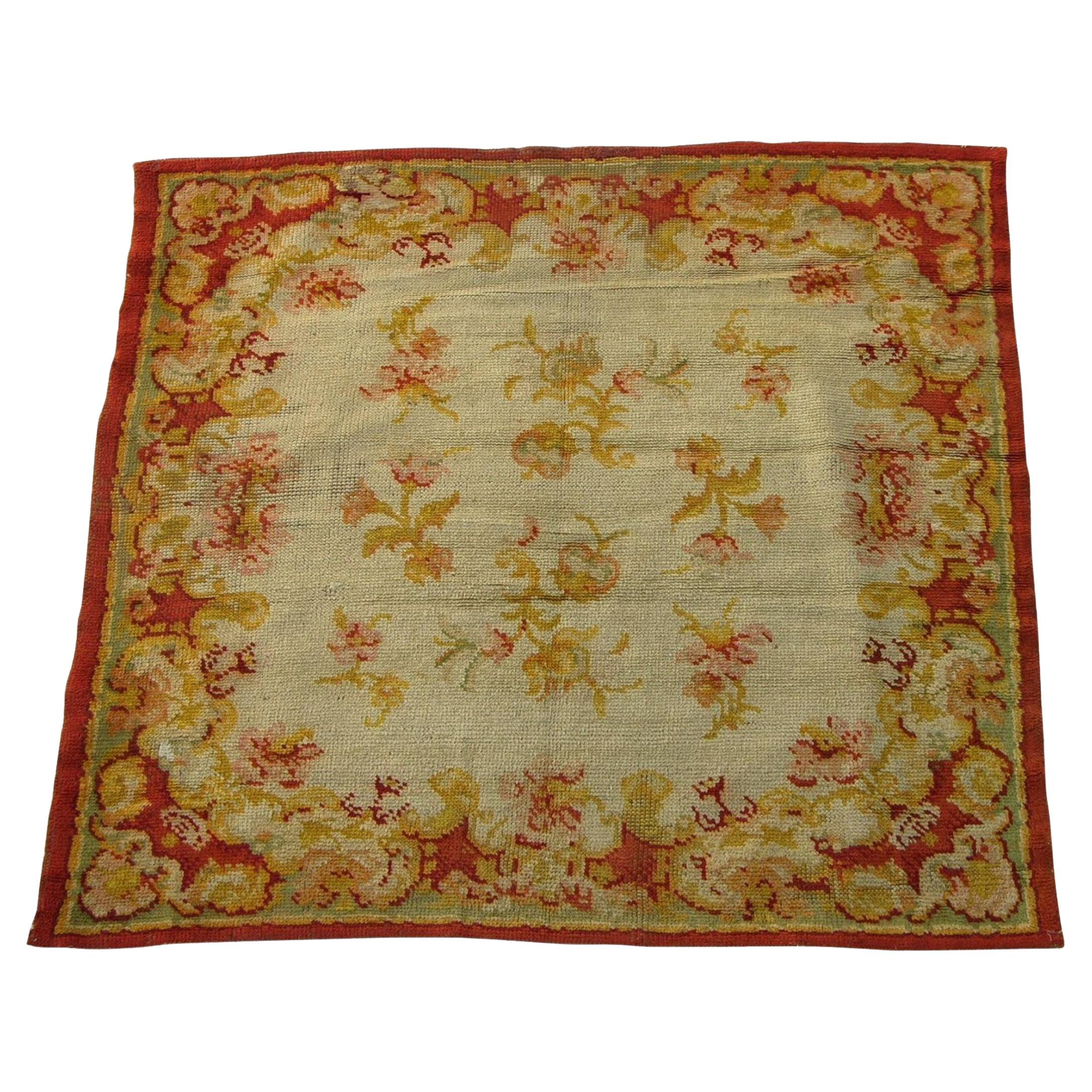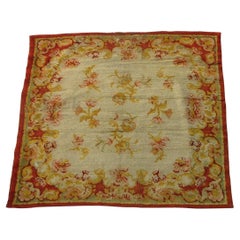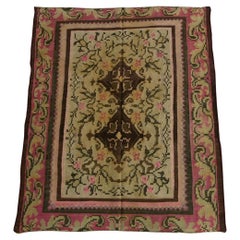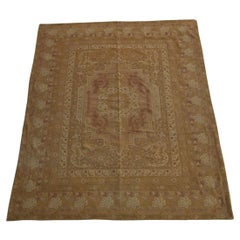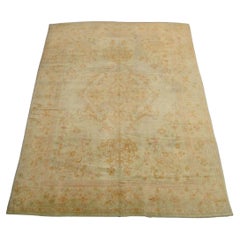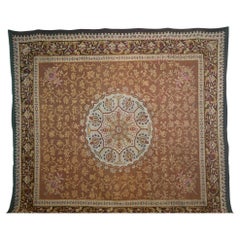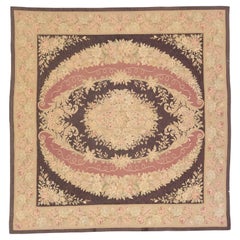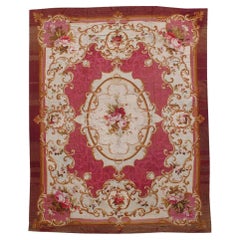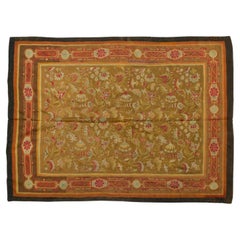Items Similar to Mid-19th Century European Aubusson Style Rug
Want more images or videos?
Request additional images or videos from the seller
1 of 5
Mid-19th Century European Aubusson Style Rug
$6,750
£5,102.16
€5,863.29
CA$9,399.33
A$10,456.37
CHF 5,481.36
MX$127,774.33
NOK 69,798.31
SEK 65,705.45
DKK 43,767.26
Shipping
Retrieving quote...The 1stDibs Promise:
Authenticity Guarantee,
Money-Back Guarantee,
24-Hour Cancellation
About the Item
Mid-19th Century European Aubusson Style Rug 5'7'' x 4'5'' , handmade and hand-knotted, empire traditional style
- Dimensions:Width: 53 in (134.62 cm)Length: 67 in (170.18 cm)
- Style:Empire (In the Style Of)
- Materials and Techniques:
- Period:
- Date of Manufacture:1900
- Condition:Good Condition.
- Seller Location:Los Angeles, US
- Reference Number:Seller: 4946y1stDibs: LU9020235623752
About the Seller
5.0
Platinum Seller
Premium sellers with a 4.7+ rating and 24-hour response times
Established in 1920
1stDibs seller since 2023
63 sales on 1stDibs
Typical response time: <1 hour
- ShippingRetrieving quote...Shipping from: Los Angeles, US
- Return Policy
Authenticity Guarantee
In the unlikely event there’s an issue with an item’s authenticity, contact us within 1 year for a full refund. DetailsMoney-Back Guarantee
If your item is not as described, is damaged in transit, or does not arrive, contact us within 7 days for a full refund. Details24-Hour Cancellation
You have a 24-hour grace period in which to reconsider your purchase, with no questions asked.Vetted Professional Sellers
Our world-class sellers must adhere to strict standards for service and quality, maintaining the integrity of our listings.Price-Match Guarantee
If you find that a seller listed the same item for a lower price elsewhere, we’ll match it.Trusted Global Delivery
Our best-in-class carrier network provides specialized shipping options worldwide, including custom delivery.More From This Seller
View AllMid-19th Century English Woolen Rug 5'6'' X 5'5''
Located in Los Angeles, US
Mid-19th Century English Woolen Rug 5'6'' x 5'5'', Made in England (UK) in mid 19th century and has been passed around generations and it has a royalty fam...
Category
Antique Early 1900s Other Russian and Scandinavian Rugs
Materials
Wool
Early 20th Century Antique Bessarabian Rug
Located in Los Angeles, US
Antique Bessarabian Rugs / Kilims in both pile and tapestry weaving technique are some of the more beautiful carpets to have been produced in Europe. Many of the Bessarabian Kilims w...
Category
Antique Early 1900s Other Russian and Scandinavian Rugs
Materials
Wool, Cotton
1900s Antique French Needlepoint Rug
Located in Los Angeles, US
Needlepoint rugs were created using the traditional needlework weaving technique that is used to make everyday items from furniture to carpets and artwork. However, it has a fascinating history both as a hobby and as an industry. When many people think of carpets, they think of pile carpets or flat weave kilims, but needlepoint has also been used to create beautiful carpets. These carpets are durable and an important part of carpet history.
Archaeologists and scholars consider the roots of needlepoint to have been around 1500 BC. They consider the first needlepoint to include the fine diagonal stitches that were used to sew tents together by the ancient Egyptians. The art eventually evolved into tapestry weaving. However, a tapestry weaving differs significantly from needlepoint in that it uses a loom and vertical warp.
Tapestry weaving is closer to the weaving of kilims and pile rugs than canvas work. However, some still include tapestry weaving in the category of needlepoint because of the fine work that appeared during the late Renaissance. It can have a similar appearance to the untrained eye. Technically, tapestry weaving and needlepoint are not the same, and they do not use the same technique.
The first actual needlepoint rugs and needle-points began to appear in the late Renaissance. Needlepoint is worked by creating stitches on a stiff canvas. The canvas is typically made from jute or linen and is quite durable. Pieces from the Renaissance were used to cover footstools, chairs, pillows, bed headboards, and other furnishings. They were also used as table coverings and wall coverings. You could also find them on many small items such as purses, shoes, and various adornments for clothing.
During the Renaissance, the craft reached a high level of skill, and the designs became incredibly detailed and realistic. They mimicked many of the subjects and styles of famous paintings of the time. They created florals, still life designs, scenes, and geometric tiled pieces. Some of them mimicked the designs found in Persian Carpets.
Needlepoint reached its peak popularity in the 19th century when it was considered a proper occupation for a lady. Needlepoint and embroidery held a similar place in societal status at the time. During this time, the work became finer, with some of the canvas reaching a high level of detail. The level of detail is determined by counting the number of mesh in an inch. During this time petit point by French needlewomen could have a mesh count as high as 45 mesh. This allowed women to create highly intricate designs with incredible levels of detail.
It is possible to find many antique pieces of needlepoint besides rugs. Needlepoint rugs were popular in France and Spain, where the technique was adapted to create highly intricate designs that mimicked the designs in architecture and fashion. They were popular because they were durable, and it could be fashioned into a variety of items. The canvases themselves were durable, and the wool that they used was also strong, which means that many of the pieces were able to withstand daily use. We have many artifacts that have survived from this time period.
Needlepoint rugs are important collectibles because they are different from the pile rugs and kilims that are typically found on the market. Needlepoint carpets are special because they take many hours to create, especially larger works. Needlepoint pieces of any type became popular throughout Europe during the 19th century. It is still a popular hobby today, but perhaps one of the most interesting stories is that of the Portuguese needlewomen of Arraiolos.
The story of these women and their beautiful carpets begins in 1492. Needlepoint was a popular occupation in Spain, which had a large population of Moors and Jews. They were an integral part of Spanish culture. However, in 1492, Queen Isabella of Spain issued a proclamation that gave these ethnic groups the order to pack their bags and board ships headed...
Category
Antique Early 1900s Other Russian and Scandinavian Rugs
Materials
Wool, Cotton
Antique Oushak Rug 13.0x9.3
Located in Los Angeles, US
Antique Turkish Oushak rugs have been woven in Western Turkey since the beginning of the Ottoman period. Historians attributed to them many of the great masterpieces of early Turkish...
Category
Antique Early 1900s Other Russian and Scandinavian Rugs
Materials
Wool, Cotton
Antique Oushak Rug 11.3x8.2
Located in Los Angeles, US
Antique Turkish Oushak rugs have been woven in Western Turkey since the beginning of the Ottoman period. Historians attributed to them many of the great masterpieces of early Turkish...
Category
Antique Early 1900s Other Russian and Scandinavian Rugs
Materials
Wool, Cotton
Early 20th Century Antique British Needlework Rug
Located in Los Angeles, US
Needlepoint rugs were created using the traditional needlework weaving technique that is used to make everyday items from furniture to carpets and artwork. However, it has a fascinat...
Category
Early 20th Century Other Russian and Scandinavian Rugs
Materials
Wool, Cotton
You May Also Like
Antique Aubusson Rug
Located in New York, NY
Handwoven, French Aubusson rug circa 1870
Center Medallion.
Category
Antique Late 19th Century French French Provincial Western European Rugs
Materials
Wool
$38,000
Early-20th Century, French, Aubusson Rug
Located in New York, NY
Vintage French Aubusson rug
Beigh and purple design
Floral border with center medallion
1920
FJ Hakimian #2627.
Category
Early 20th Century French Aubusson Western European Rugs
Materials
Wool
Aubusson Rug, Mid-19th Century
Located in San Francisco, CA
Aubusson Rug, Mid-19th Century
Additional Information:
Dimensions: 11'6" W x 13'8" L
Category
Antique Mid-19th Century French Western European Rugs
Materials
Wool
1800 France-Carpet Aubusson hand-woven wool
Located in Milano, Lombardia
France, 18th Century
Hand-woven wool
190x250 cm
Category
Antique 18th Century French Aubusson Western European Rugs
Materials
Wool
Late French Empire Carpet of Aubusson Weave
Located in Vancouver, British Columbia
An early 19thC French Aubusson weave carpet in the pure Empire style. The outside dark orange/brown border has likely been altered (reduced), and possibly dyed in places but is in ke...
Category
Antique Early 19th Century French Aubusson Western European Rugs
Materials
Wool
$5,200 Sale Price
20% Off
Antique French Aubusson Rug Carpet, circa 1890
Located in Secaucus, NJ
Antique French Aubusson rug carpet, circa 1890 13'4 x 16'6. Typical French Aubusson design, with the central ivory medallion surroun...
Category
Antique Late 19th Century French Aubusson Western European Rugs
Materials
Wool
More Ways To Browse
19th Century Aubusson Rug
Mid Century 2 Seater Sofa
Plant Stool
Set 12 Dining Chairs
Solid Walnut Desk
Solid Wood Side Table Stool
1959 Wood Couch
Dutch Mid Century Chair
Rare Stone Table
Used Chair And A Half
Wood Folding Chair
Antique Green Side Table
Antique Red Velvet
Antique Wall Bracket
Midcentury Rosewood Dining Table
Pedestal Mahogany Dining Table
Vintage 1940s Sofas
1970s Kitchen Table
